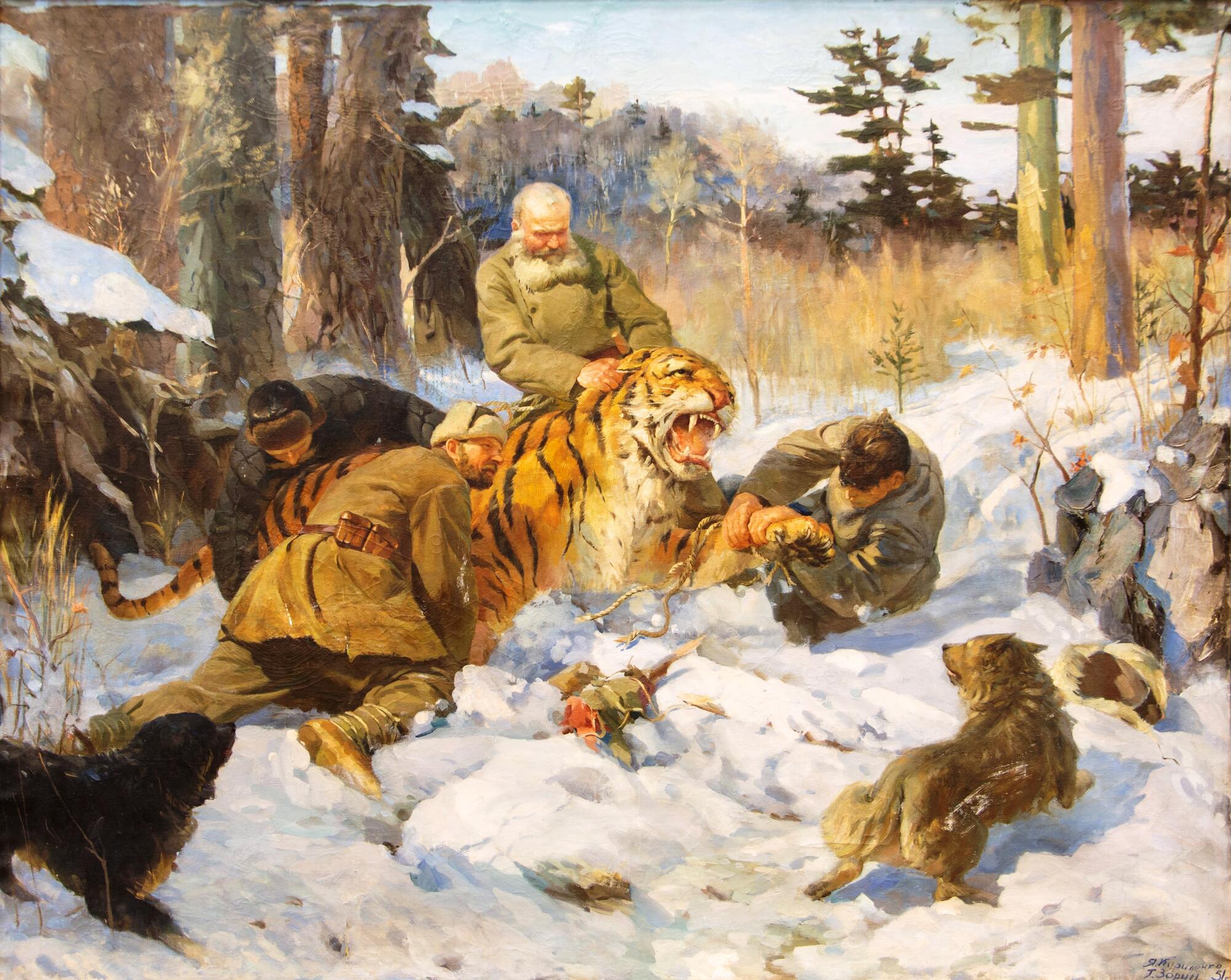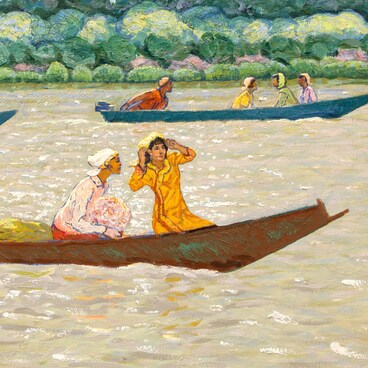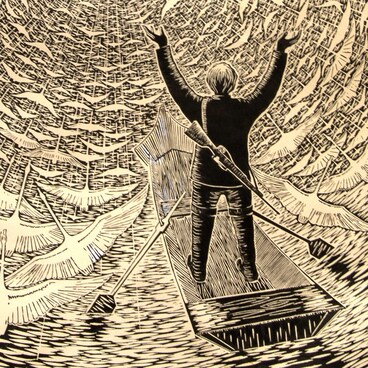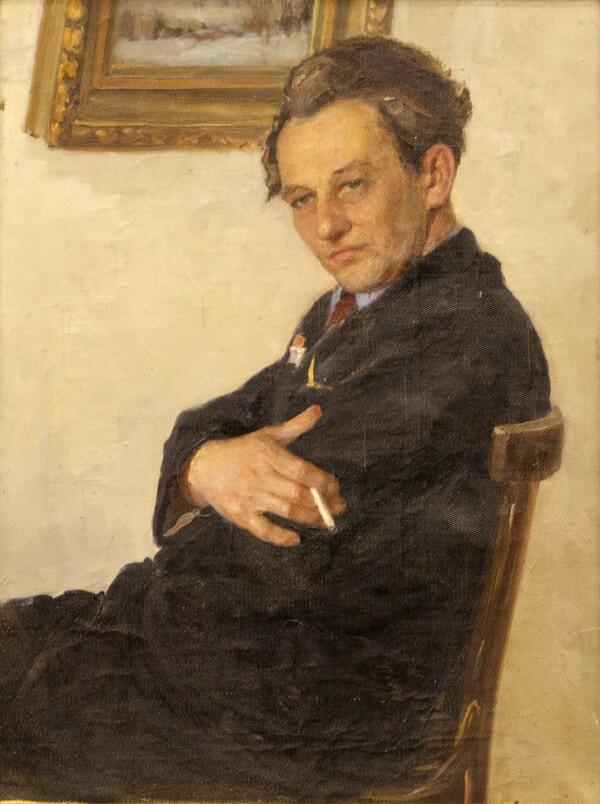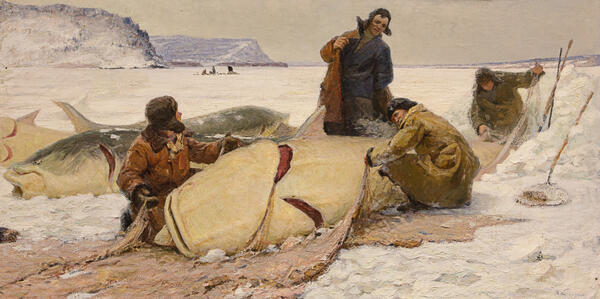Yakov Semyonovich Kurilenko and Grigory Stepanovich Zorin, talented painters and veterans of the Great Patriotic War, began their collaboration in the 1950s. Together, they created several major works, the most famous being “Tiger Trappers” (“Ivan Bogachyov’s Hunting Brigade Trapping a Tiger”, 1951).
At the Moscow national exhibition in 1951, the painting caused a sensation and at the same time raised a lot of eyebrows: is it possible, even for several hunters, to tie a tiger down with their bare hands? Nevertheless, the depicted scene was based on real precedents and was not that rare of an occasion for hunters.
Since the late 19th century, tiger hunting has attracted people as a profitable business. Over just one decade (1930–1940), 49 teenage tiger cubs were trapped in the Far Eastern taiga. Animals were usually sent to circuses and zoos. A hunting brigade consisted of four or five highly experienced hunters and strong hunting dogs that targeted tigers. Once they picked a tigress’ trail, the brigade scared it off with blank shots and then walked shoulder to shoulder toward a teenage cub, forced it down on the ground and tied it up.
The legendary trapper of the Khabarovsk region Ivan Bogachyov (1884–1959) became famous for capturing 36 tigers up to when he was 73 years old. The writer Vsevolod Petrovich Sysoyev, who knew Bogachyov personally, based two characters on him — Kalugin from the book “Tiger Trappers. Notes of a Hunter” and Bogatyryov from the story “Amur Hunters (A Year from the Life of the Bogatyryovs)”.
The artists were inspired by the literary works. Grigory Zorin met Ivan Bogachyov a little before he started working on the painting. The tiger trappers willingly posed during sessions both in the studio and en plein air. The taiga landscape was painted from life: Zorin and Kurilenko worked on it while sitting in a tent and trying to warm up their hands and paints with the heat from makeshift stoves. The tiger was based on an exhibit from a local history museum.
The artists created three versions of the painting. The second one was transferred to Moscow in 1951, while another adorned the Russian Vodka store on Lenin Square in Komsomolsk-on-Amur in the 1990s. The Komsomolsk-on-Amur Museum houses the original and most accomplished version, based on the studies made during a trip to the Sikhote-Alin mountains.
At the Moscow national exhibition in 1951, the painting caused a sensation and at the same time raised a lot of eyebrows: is it possible, even for several hunters, to tie a tiger down with their bare hands? Nevertheless, the depicted scene was based on real precedents and was not that rare of an occasion for hunters.
Since the late 19th century, tiger hunting has attracted people as a profitable business. Over just one decade (1930–1940), 49 teenage tiger cubs were trapped in the Far Eastern taiga. Animals were usually sent to circuses and zoos. A hunting brigade consisted of four or five highly experienced hunters and strong hunting dogs that targeted tigers. Once they picked a tigress’ trail, the brigade scared it off with blank shots and then walked shoulder to shoulder toward a teenage cub, forced it down on the ground and tied it up.
The legendary trapper of the Khabarovsk region Ivan Bogachyov (1884–1959) became famous for capturing 36 tigers up to when he was 73 years old. The writer Vsevolod Petrovich Sysoyev, who knew Bogachyov personally, based two characters on him — Kalugin from the book “Tiger Trappers. Notes of a Hunter” and Bogatyryov from the story “Amur Hunters (A Year from the Life of the Bogatyryovs)”.
The artists were inspired by the literary works. Grigory Zorin met Ivan Bogachyov a little before he started working on the painting. The tiger trappers willingly posed during sessions both in the studio and en plein air. The taiga landscape was painted from life: Zorin and Kurilenko worked on it while sitting in a tent and trying to warm up their hands and paints with the heat from makeshift stoves. The tiger was based on an exhibit from a local history museum.
The artists created three versions of the painting. The second one was transferred to Moscow in 1951, while another adorned the Russian Vodka store on Lenin Square in Komsomolsk-on-Amur in the 1990s. The Komsomolsk-on-Amur Museum houses the original and most accomplished version, based on the studies made during a trip to the Sikhote-Alin mountains.
